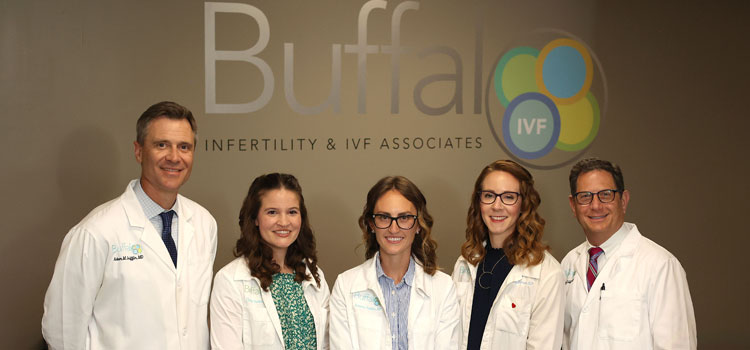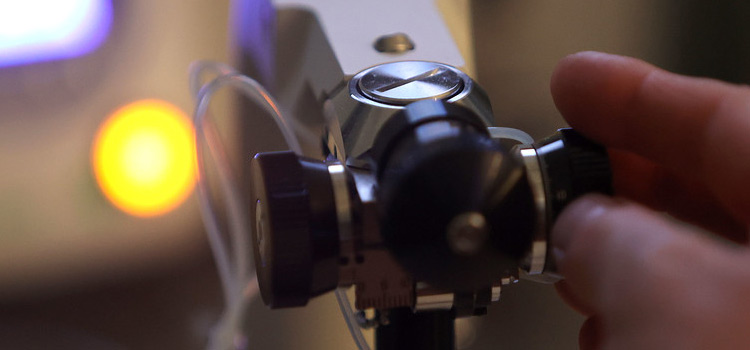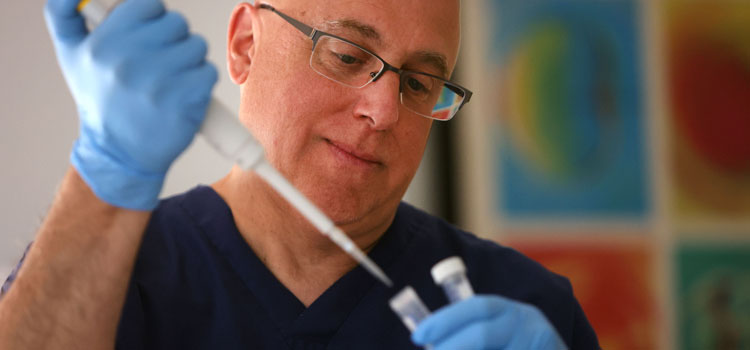Infertility Education
Uterine Fibroids
Uterine fibroids (also called myomas or leiomyomas) are benign (noncancerous) tumors of muscle tissue that can change the shape or size of the uterus and sometimes the cervix. They start in the smooth muscle cells inside the wall of the uterus (myometrium). Fibroids usually occur in the form of multiple tumors, although single fibroids are sometimes possible.
Fibroids are noted in 20% of women in the reproductive years, but those of African descent have been shown to have a higher incidence of fibroid formations (50-80%). Whether fibroids cause symptoms or require any type of treatment depends on their location and size in the uterus. Fibroids occur when a single muscle cell in the wall of the uterus multiplies to form a noncancerous tumor. The exact cause of uterine fibroids is unclear, but there is evidence that it may be a combination of genetic, hormonal, and environmental factors.
Fibroids are usually found in or around the body of the uterus, but they sometimes occur in the cervix. Fibroids within the uterus can be divided into three categories: subserous (located in the outer wall of the uterus); intramural (found in the muscular layers of the uterine wall); and submucous (protruding into the uterine cavity). In addition, fibroids can be connected to the uterus through a stalk (pedunculated), or fibroids can be attached to nearby organs, like the bladder and bowel, or the ligaments surrounding the uterus. About 55% of fibroids are subserosal; 40% are intramural; and 5% are submucosal. Fibroids are rarely found outside the pelvic cavity.
Can fibroids affect fertility?
Uterine fibroids are common, and they are found in 5-10% of infertile women. Certain types of fibroids are known to decrease fertility. They include fibroids that are inside the uterine cavity and very large fibroids (>4 cm in diameter) that are located within the wall of the uterus. Because most women with fibroids will not be infertile, they and their partners should have a thorough evaluation to detect other problems that can decrease fertility. A fertility specialist can help determine if fibroids might be hampering their ability to conceive.
How do fibroids cause infertility?
There are several explanations for why uterine fibroids may reduce fertility.
- Changes in the position of the cervix (the vaginal opening to the womb) due to fibroids located above it may affect the number of sperm that can travel through the cervix.
- Changes in the shape of the uterus can interfere with sperm movement.
- Blockage of the fallopian tubes by the fibroids.
- Affecting the blood flow to the uterine cavity where the embryo would implant.
- Changes in the uterine muscle that prevents movement of the sperm or the embryo.
What happens to fibroids during pregnancy?
Fibroids are found in 2% to 12% of pregnant women. Not all fibroids will increase in size and complicate a pregnancy. If a fibroid grows, it will typically do so in the first 12 weeks of pregnancy and sometimes shrink as the pregnancy continues.
In some instances, fibroids can possibly outgrow their blood supply and cause severe pain that might lead to hospitalization. Also, fibroids can change the baby’s presentation (position at birth), increase the risk of a cesarean section, miscarriage and preterm delivery. The management of fibroids depends on your doctor’s recommendations. Rarely is surgery necessary or performed during pregnancy.
Do all fibroids require treatment?
Fibroids usually do not require treatment because most patients with fibroids do not have symptoms. Women with fibroids should have regular checkups to determine if the fibroids are changing in size, to track worsening symptoms, and if planning to get pregnant.
Fibroid treatment options
Since some fibroids are affected by estrogen levels, medical management of uterine fibroids may help temporarily but will not improve fertility. Medications that are used may be associated with undesirable side effects. These medicines include gonadotropin-releasing hormone (GnRH) analogs (hot flashes, vaginal dryness, mood changes, osteoporosis), birth control pills (breast tenderness, blood clots), progestins (bloating, abnormal bleeding), and adrogens (unwanted hair growth). Alternative approaches such as herbal and homeopathic therapies have not been shown to improve symptoms caused by fibroids.
When is surgery considered for fibroids?
Surgery is considered when fibroids cause significant symptoms and should not be considered to treat infertility until after a thorough evaluation of other factors that could be causing infertility.
Surgical options when future fertility is desired
The only surgical option available to women who desire to get pregnant in the future is a myomectomy, or surgical removal of the fibroids. In most cases, the size and location of the fibroids will determine the appropriate surgical technique.
The type of myomectomy performed (described below) depends on the location and size of the fibroids All myomectomies carry the risk of scarring and adhesions which can affect future fertility. Each also carries the risk of excessive bleeding, which may require a hysterectomy.
Abdominal myomectomy (Laparotomy). With this method, the surgeon makes an incision in the abdominal wall. It is most commonly used to remove tumors on the outer surface of the uterus and surrounding organs. This surgery usually requires a 24 to 72 hour hospital stay and 4-6 weeks’ recovery.
Laparoscopic myomectomy. During operative laparoscopy, the doctor places a laparoscope into the abdomen through a small incision near the navel and then uses surgical instruments placed through small 5-10 mm incisions to remove the fibroids. Women can be sent home from the hospital the same day or within 24 hours. Recovery time is usually two to seven days.
Robot-assisted laparoscopic myomectomy. During a robotic procedure, a doctor places a telescope into the abdomen at or above the navel. Up to five other small incisions are made to hold the instruments to remove the fibroids. Women are typically sent home from the hospital the same day or within 24 hours. Recovery time is usually between a few days and a week.
Hysteroscopic myomectomy. During this procedure, the doctor inserts a telescope through the cervix and fills the uterus with fluid to expand the walls. Surgical instruments are then inserted through a channel in the hysteroscope to remove submucous fibroids. Generally, women are sent home the same day as surgery and can return to their normal activities within a few days after the procedure. Serious complications are uncommon and include damage or scarring to the inside cavity of the uterus, electrolyte imbalance (changes in the minerals in the blood system), puncturing the uterus and bleeding.
Recurrence of fibroids following surgery
This risk of recurrence is about 30% over 10 years. Patients with multiple fibroids are more likely to experience recurrence as compared to patients with solitary fibroids.
Other options when future fertility is not desired
Myolysis
Another laparoscopic technique called myolysis involves burning the fibroids through heat energy via needles or lasers.
MrgFUS
MRI-guided focused ultrasonic treatment (MrgFUS) is a relatively new technology with limited information about long-term outcomes. At this time, MrgFUS cannot be recommended for women hoping to maintain or improve their fertility.
Uterine artery embolization (UAE)
UAE is a procedure performed by a radiologist that involves injecting small particles into the uterine blood vessels. These particles clog the small blood vessels that supply the fibroids, impeding the blood supply and causing these fibroids to degenerate. Patients generally experience several days of pain after the procedure. Fibroid volume shrinks by 40-50%, and the majority of patients experience symptomatic relief. At this time, it is not recommended for women desiring future fertility and pregnancy.
Hysterectomy
Approximately 50% of all hysterectomies are performed to treat uterine fibroids. If you have symptomatic fibroids and future pregnancy is not desired, a hysterectomy (surgical removal of the uterus) may be recommended. There are three ways to perform a hysterectomy: abdominally, vaginally and in some cases laparoscopically. Recovery time is usually two to six weeks. It is important to discuss with your doctor the potential implications of a hysterectomy, including the sexual, psychological and medical consequences.
Summary
Uterine fibroids are common and can affect fertility in many ways. They can affect ovulation, fertilization and implantation. Treatment options vary, but treatment will help to address the gynecologic symptoms of fibroids and improve overall fertility. The management of uterine fibroids will depend upon the severity of your symptoms and your doctor’s recommendations.












